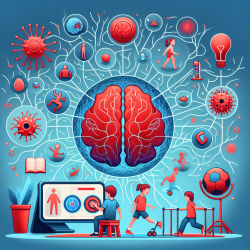Introduction
Sex trafficking, a grave violation of human rights, predominantly affects women and girls and poses significant health risks. The research article, "An International Comparative Public Health Analysis of Sex Trafficking of Women and Girls in Eight Cities: Achieving a More Effective Health Sector Response," provides a detailed examination of how health systems can better respond to this crisis. This blog explores the key findings and offers guidance for practitioners seeking to enhance their skills and engage more effectively in anti-trafficking efforts.
Understanding the Health Implications
The study highlights that up to 50% of sex trafficking victims in the USA seek medical attention while being trafficked. However, the healthcare system's response is often inadequate. Practitioners must recognize the complex health issues associated with trafficking, including physical injuries, sexually transmitted infections, and psychological trauma. Understanding these implications is crucial for providing comprehensive care.
Key Determinants of Sex Trafficking
The research identifies several determinants of sex trafficking, including child sexual abuse, family dysfunction, and economic insecurity. Practitioners should be aware of these factors to better identify at-risk individuals and provide preventive interventions. Additionally, societal norms that objectify women contribute to trafficking, emphasizing the need for cultural sensitivity in healthcare practices.
Barriers to Effective Health Sector Response
One of the significant barriers is the low awareness of sex trafficking among health workers. Attitudinal biases and lack of training further hinder effective responses. Practitioners should advocate for and participate in training programs that enhance their ability to identify and support trafficking victims. Building awareness and sensitivity can improve victim identification and care.
Recommendations for Practitioners
- Prevention: Integrate trafficking prevention strategies into existing health programs, focusing on early identification and intervention for at-risk women and girls.
- Victim Identification: Participate in training programs that enhance skills in identifying trafficking victims and providing trauma-informed care.
- Collaboration: Work with local NGOs and community organizations to develop referral systems for comprehensive care, including mental health services.
- Advocacy: Engage in policy discussions and advocate for the recognition of sex trafficking as a public health issue to influence systemic change.
Conclusion
Practitioners play a crucial role in addressing the health needs of sex trafficking victims. By understanding the determinants, barriers, and health implications, they can enhance their skills and contribute to a more effective health sector response. Collaboration with stakeholders and advocacy for systemic change are essential steps in this process.
To read the original research paper, please follow this link: An International Comparative Public Health Analysis of Sex Trafficking of Women and Girls in Eight Cities: Achieving a More Effective Health Sector Response.










